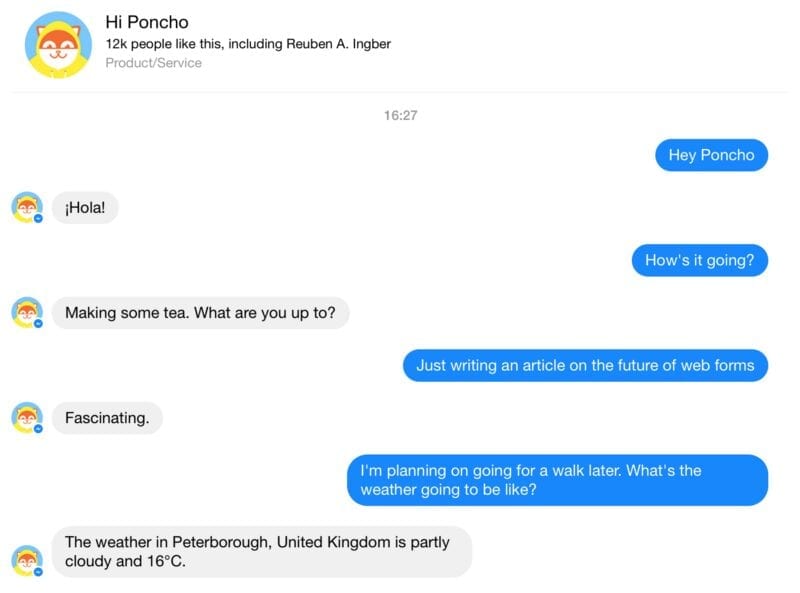The year 2017 did see a major hype of automated conversation. Chatbots actually changed how the brands conversed with their end consumers. So, if you are hearing the Chatbot chant still, you must know how Chatbots work and how well they can align with your specific business needs. Before digging into how they function, let us understand what are Chatbots?
What are Chatbots?
Also referred to as talk bot or simply Bot, Chatbot is a computer program based on Artificial Intelligence designed to simulate conversations with humans, especially over the Internet. They are simple software applications that imitate human or written or spoken human speech for simulating an interaction with an individual. Now that we have figured out what a chatbot really means, let us get into the deep nerdy stuff as to how do Chatbots work?
Wanna know more on Chatbots? Then grab a fresh copy right here.
So how does the Chatbot work?
If we put up in a layman language, a Chatbot offers assistance similar to a human serving as a help desk. So when the end consumer opens up a dialogue box for conversation, the Chatbot becomes the medium that responds.
As we did mention already that Chatbots are the best application of Artificial Intelligence, they can be easily bifurcated into two categories. The simpler Q/A bot requires a smaller skillset and knowledge base and is limited to answer only a specific set of questions while the smarter machine learning Chatbots harness the full potential of Artificial Intelligence.
For being an efficient bot and ability to offer relevant answers, the Chatbot basically employs four major parameters as Text Classifiers, Suitable Algorithms, Artificial Neural Networks and Natural Language Processing (NLP). All these factors contribute to the overall bot functionality and intelligence of the Chatbot.
Text Classifiers: How they come as help?
The best way to understand what text classifiers mean to a bot is a way of segregating a piece of data (word or sentence) into multiple categories (intent) understood by the Chatbot. It can also be mentioned as a method of extracting generic tags from an unstructured text. For instance the text input “How are you doing?” is associated with a clear response of “I am good”. The Text Classifiers enables the Chatbot to classify information and thereby produce responses based on the same. It is crucial that the Chatbot is able to distinguish the input cases and generate effective responses.
The best instance is the Spock Bot where it allows users to chat with the second in command of Star Trek’s USS Enterprise including the exchange of instant messages and photographs. The bot uses pattern matching to classify text and produces suitable responses for the end consumer.
Also Read: Tips to create addictive Chatbots

Algorithms: The Structurer
For reducing the work of the Text classifiers, Algorithms play a major role. They seem to work in the following manner. It is supposed that the set of words belong to a particular class and with every input, each word gets counted for its occurrence. It is then counted for its common type and is assigned a score. Higher the score of the class the more likely it is to be associated with the input sentence. The highest score only provides relativity and does not guarantee a perfect match.
aLVin, for instance, is a perfect bot for interacting with brokers to better understand “intent” and deliver the right piece of content. aLVin being an intelligent multichannel virtual assistant leverages Natural Language Understanding (NLU) and a certain set of algorithms to increase the number of transactional tasks that aLVin can assist with.
Also Read: Master Guide to Chatbot Architecture
Artificial Neural Networks
The Chatbot personality is decided by the kinds of Artificial Neural Networks employed at its end. A Neural Network is a deep learning model dedicated to handling a set of sequences. Artificial Neural Networks comprises of processing elements and is organized in three interconnected layers as input, a hidden layer, and the output.

As discussed with Algorithms, here to there is an important task of classification as the data (words or sentences) is broken down and taken as an input for neural networks. The data for the artificial neural network is more of the algorithms and less of coding and the three interconnected layers are to analyzing and learning data.
The layers are connected so as to detect the patterns of data and with each layer, the pattern detection goes stronger and accurate.
Smart and intelligently efficient bots like Google Assistant, Siri and Alexa act as neural conversational agents and employ deep machine learning techniques to resolve everyday problems in natural, conversational replies.
Read here for a deeper view.
Natural Language Processing (NLP)
If we talk of Chatbots, we certainly can't afford to miss out on a crucial element of Artificial Intelligence, Natural Language Processing (NLP). NLP empowers bots to understand the nuances of human conversations.
In simple terminology, it is a skill of a machine to decode and process human understandable language within the context in which it is spoken.

For example, if in an enterprise a data set needs to be searched by an employee, he would always have an option to ask for that specific data set from an AI component rather than opting for a manual search. This way a large amount of time and effort is being saved which could now be used for other productive purposes.
The important elements of NLP that are currently taken in use by most bots are listed below.
- Name Entity Recognition (NER): The power to recognize and identify names in a given sequence of words can be carried by Name Entity Recognition (NER)
- Optical Character Recognition (OCR): The determination of corresponding text from the image of the printed text.
- Speech Recognition: When the user speaks, the voice-enabled bot should be smart enough to recognize the speech and convert to a textual representation.
- Sentiment Analysis: Through emotional comments of the consumers, big brands try to judge the performance of their businesses. The positive, negative and neutral comments are analyzed to get a better insight of the business potential.
Also Read: Essentials of AI Chatbot
Like many other applications, Chatbots are also tied to a Database. The information of the Database is fed to the Chatbot for extracting a suitable response for the user. With Database being mentioned, the main point still lies whether or not the Chatbot keeps learning over time and increase its knowledge base.
Need to get a Bot developed? Then reach out to us for a consultation.




